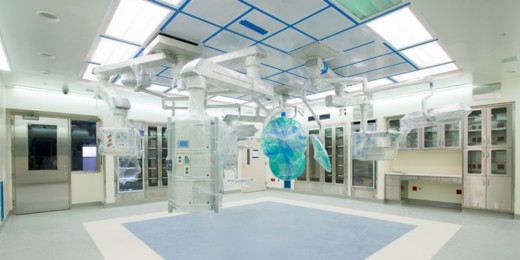The finish line is in sight for the new Stanford Hospital, following six years of construction. Crews are painting walls, hanging artwork, installing medical equipment and putting in furniture. This summer, hospital staff will begin training in the new space before its opening later this year.
The seven-story, 824,000-square-foot facility will accommodate advances in medical technology, increase capacity and meet new earthquake safety standards.
It will feature:
• An enlarged emergency department with twice the floor space of the current one
• 368 individual patient rooms that provide increased privacy and comfort for patients and their families
• 20 operating rooms, eight interventional/radiology rooms, three MRIs, three CTs and one interventional MRI
• Five gardens for patients and visitors, walking trails and a meditation room
• A parking structure with 900 spaces
The new building -- which will be connected to the existing hospital by a second-floor pedestrian bridge, an underground tunnel and a street-level pedestrian path -- is part of the Stanford University Medical Center Renewal Project. The project includes the recent expansion of Lucile Packard Children's Hospital Stanford, a renovation of the Hoover Pavilion and new labs at the School of Medicine.
Besides all the physical enhancements, hospital teams are working on digital tools that will improve the patient experience. Patients will be able to use a new version of the MyHealth app to speed up the admitting process, get reminders about appointments and view step-by-step walking directions from the parking garage to various locations within the building.
We'll share more about the new hospital in the coming months.
Photo of the new hospital courtesy of Stanford Health Care






